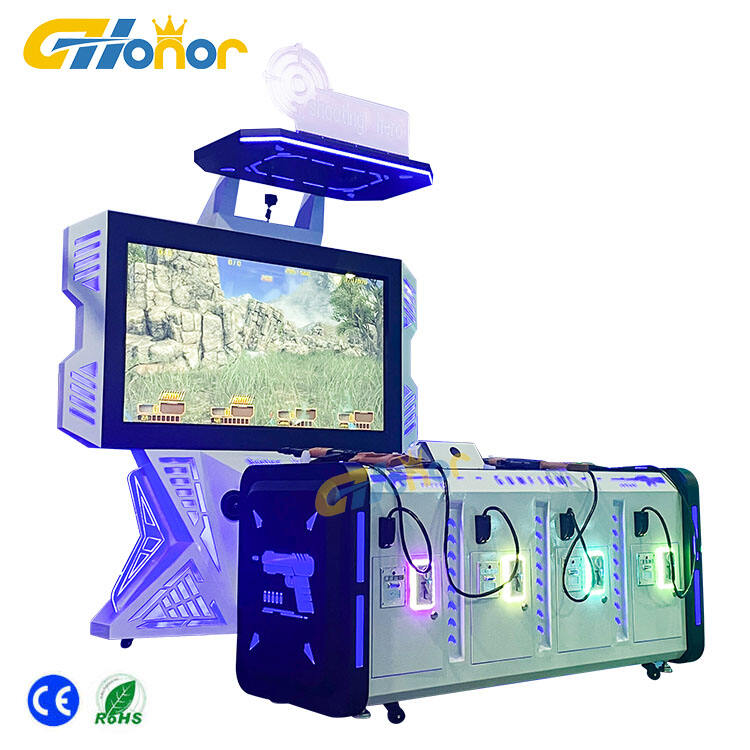A commercial arcade machine is a heavy-duty, revenue-focused gaming device designed for continuous use in high-traffic commercial settings such as arcades, shopping malls, amusement parks, and family entertainment centers. These machines are engineered to balance durability, player appeal, and operational efficiency, ensuring they withstand rigorous use while generating consistent income for operators. Commercial arcade machines are constructed with robust materials to endure the wear and tear of daily operation. Frames and cabinets use reinforced steel or high-grade plastic, resistant to scratches, impacts, and vandalism. Screens are made of tempered glass or scratch-resistant acrylic, protecting displays from accidental damage, while controls (joysticks, buttons, steering wheels) feature industrial-grade components—such as metal shafts and microswitches—that withstand thousands of actuations without failure. Internal electronics, including circuit boards and power systems, are shielded against dust, moisture, and electrical fluctuations to minimize malfunctions and downtime. Revenue-generating features are central to commercial arcade machine design. They include flexible payment systems that accept coins, tokens, credit cards, mobile payments (via QR codes or NFC), and loyalty cards, catering to diverse consumer preferences. Many models incorporate redemption systems that reward players with tickets exchangeable for prizes, encouraging repeat play as customers strive to accumulate enough tickets for desired items. Others use timed play or progressive difficulty to balance player satisfaction with profitability, ensuring the machine remains challenging but not frustrating. Gameplay is designed for broad appeal, with intuitive controls that require minimal instruction, allowing players of all ages and skill levels to engage quickly. Genres range from classic games like Pac-Man to modern options such as virtual reality experiences, racing simulators, and multiplayer fighters, ensuring there is something for every demographic. High-definition displays, immersive audio, and interactive features (e.g., motion sensors, haptic feedback) enhance engagement, keeping players entertained and encouraging longer sessions. Operational efficiency is a key consideration for operators. Commercial arcade machines often include remote monitoring systems that track usage, revenue, and technical issues in real time, allowing operators to address problems proactively. They are designed for easy maintenance, with modular components that enable quick repairs or part replacements, reducing downtime. Energy-efficient features, such as low-power standby modes, help lower operational costs for venues with high electricity usage. Safety and compliance are paramount, with commercial arcade machines meeting strict international standards (e.g., CE, UL) for electrical safety, structural integrity, and accessibility. They include features like rounded edges to prevent injuries, non-slip surfaces, and emergency stop buttons in simulators, ensuring they are safe for public use. For operators, commercial arcade machines are more than just entertainment—they are strategic assets that drive foot traffic, extend customer stays, and generate reliable revenue. Their ability to combine durability, engagement, and efficiency makes them indispensable components of successful commercial entertainment venues.
